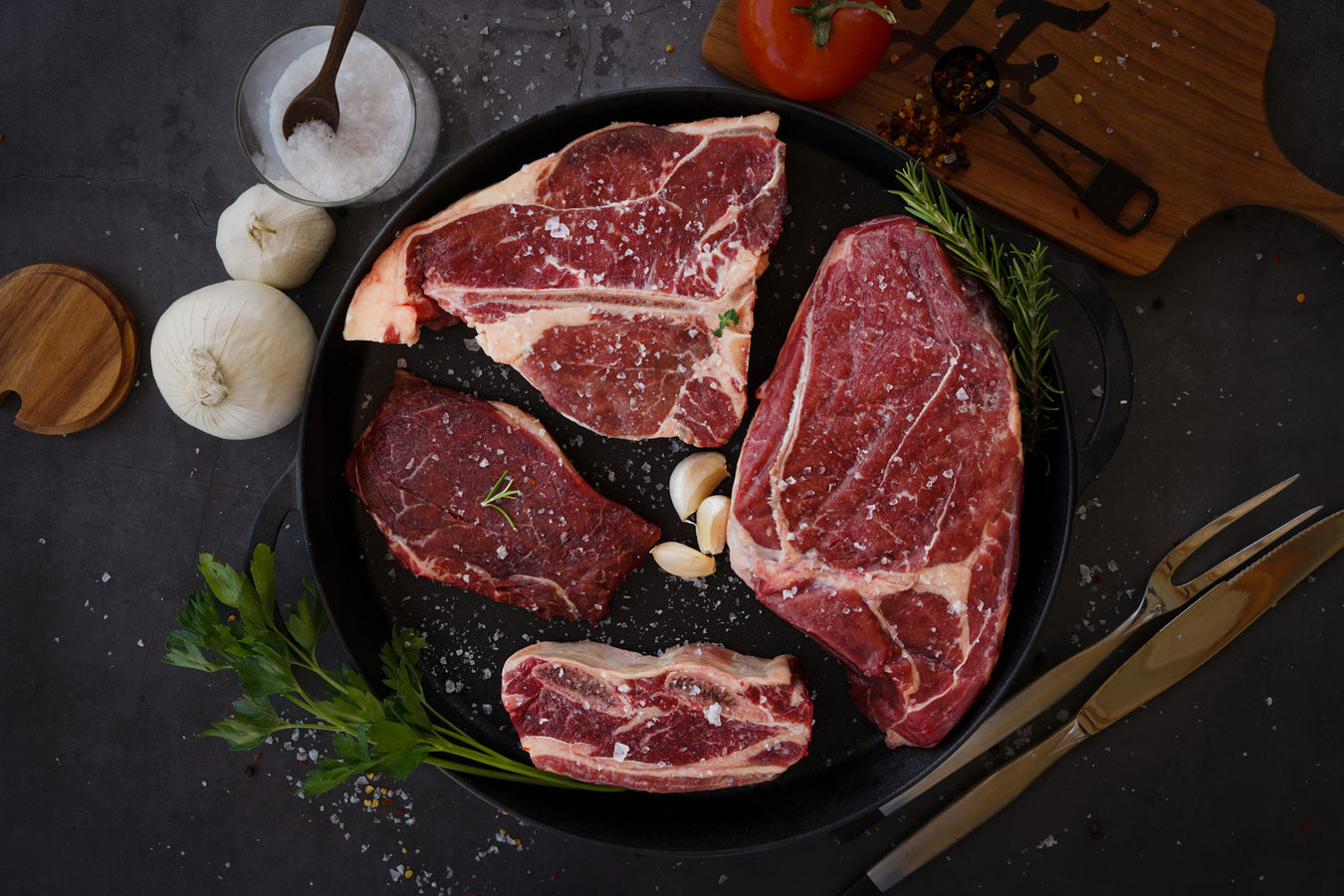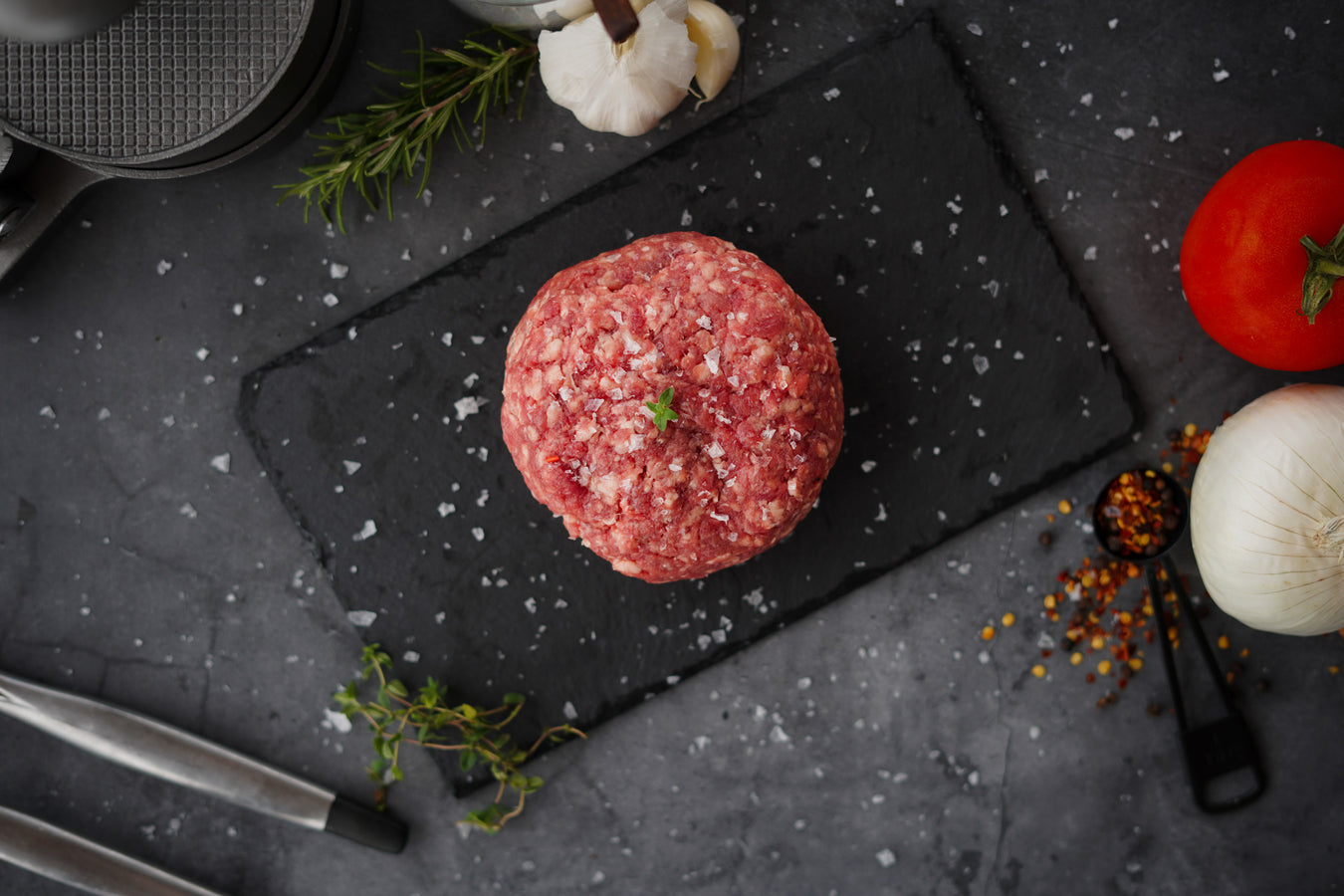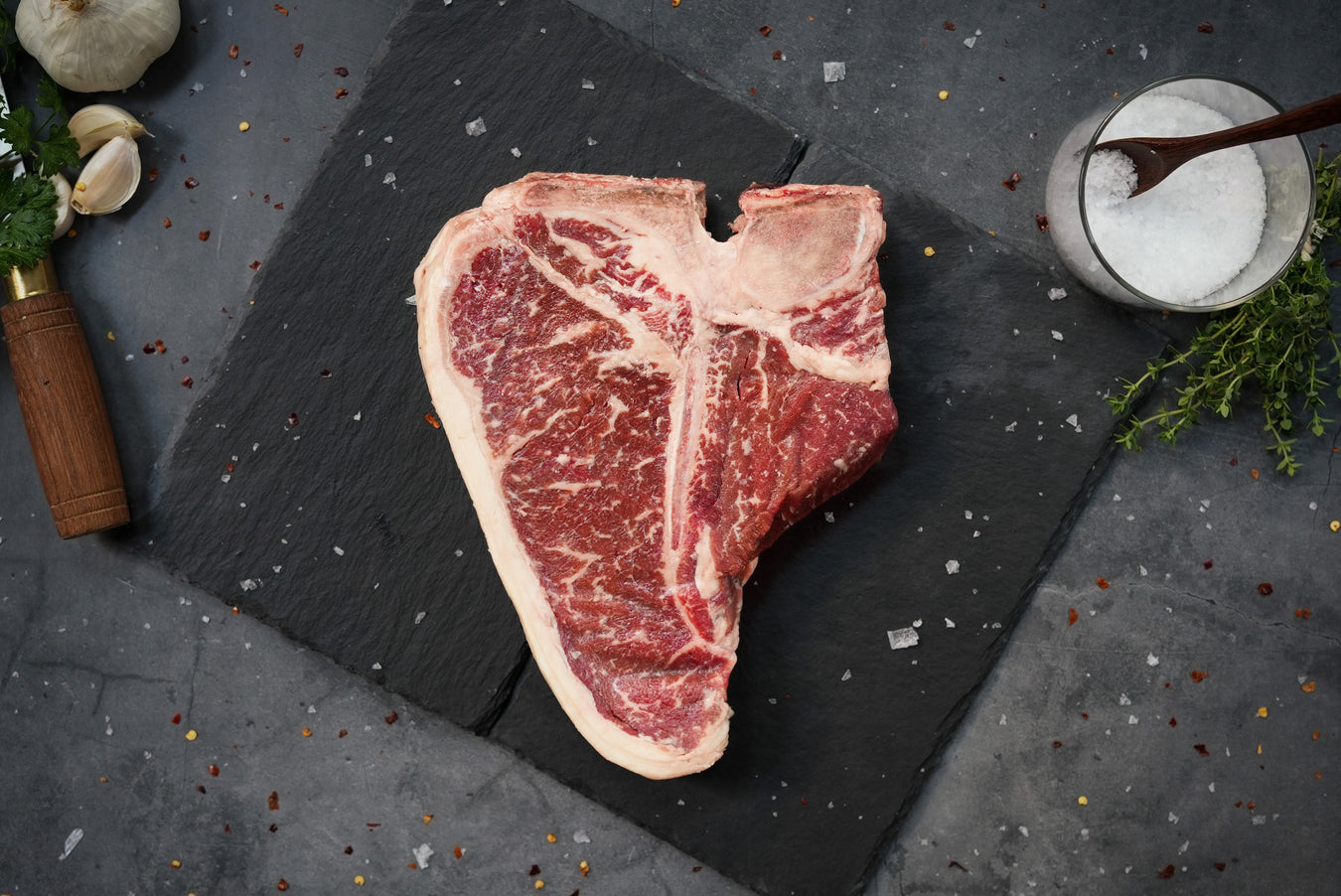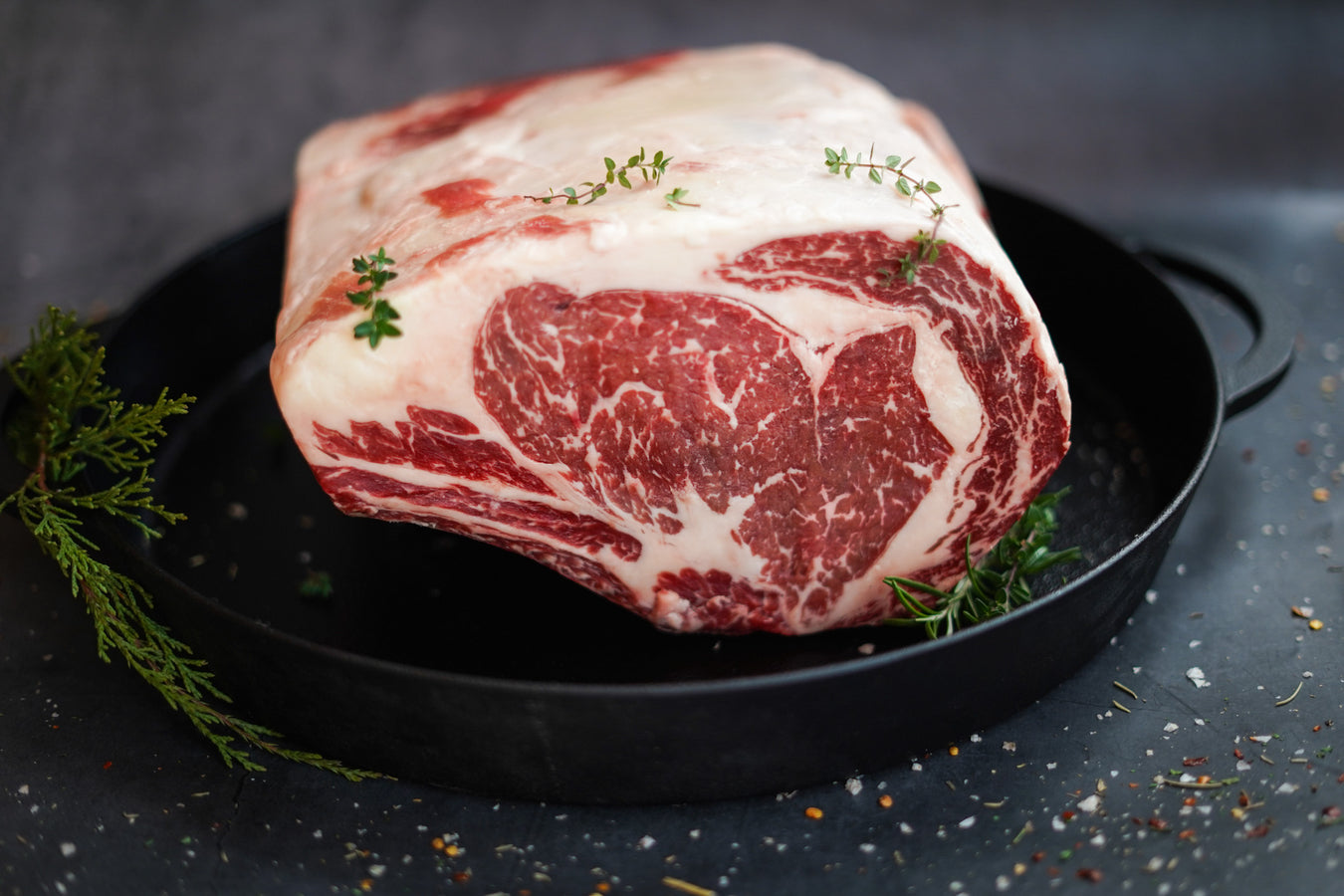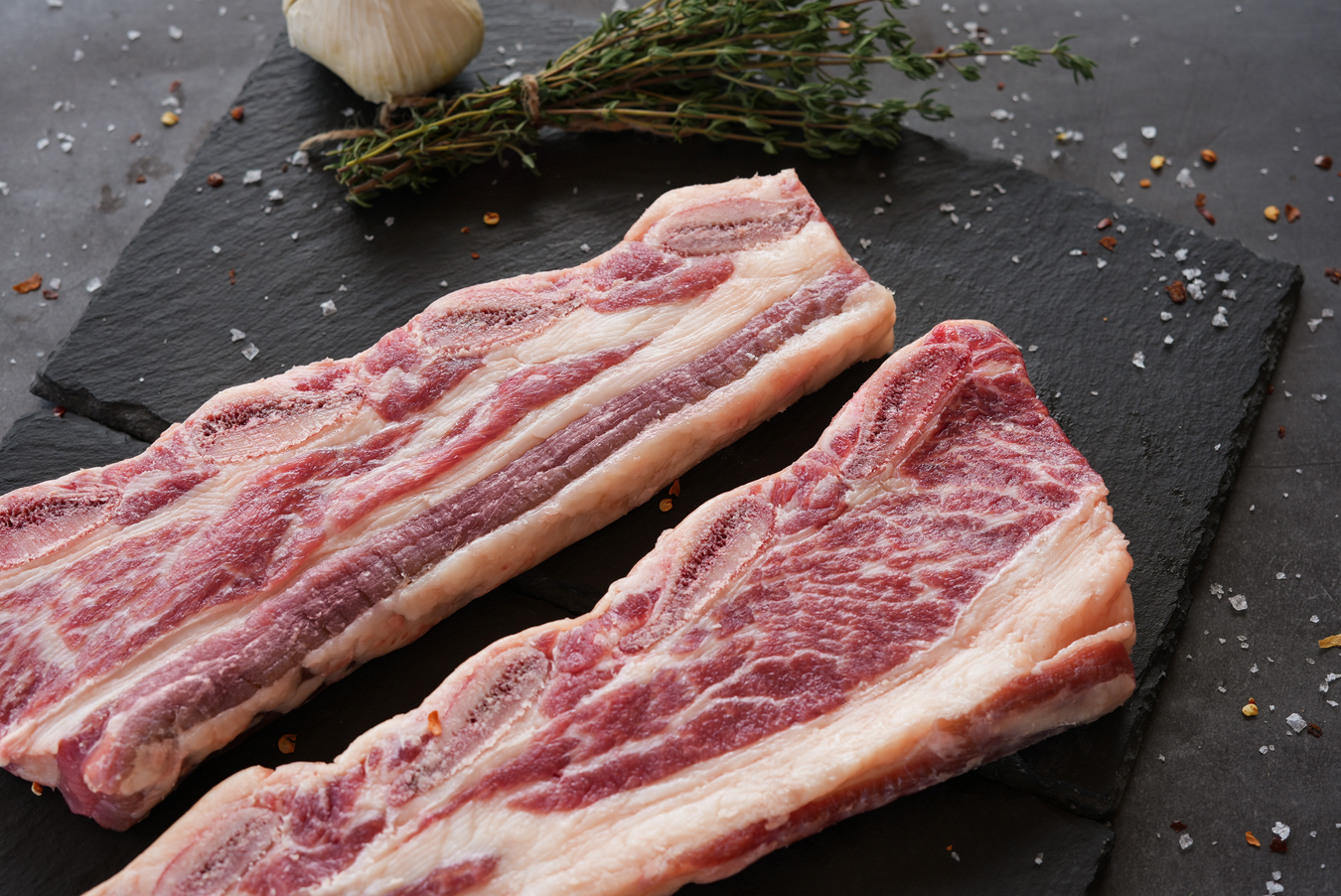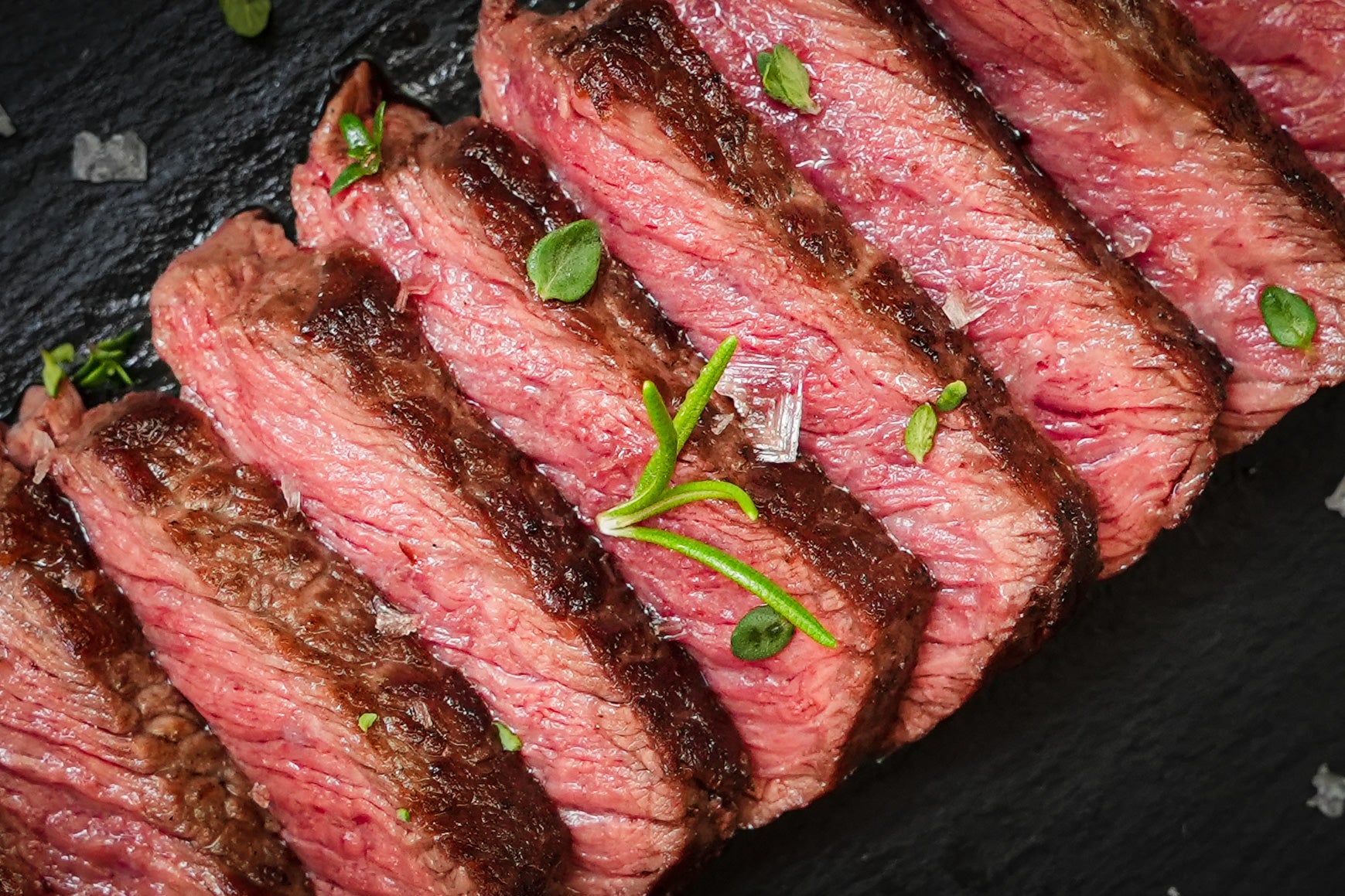
How to Cook the Perfect Steak in Cast Iron Skillet
A few of our favorite techniques to ensure your steaks are cooked perfectly every time! While you can certainly make a fantastic steak on the grill, our trusty cast iron skillet never lets us down and consistently helps us achieve that perfect sear!
1. Start with Quality Meat:
Look for well-marbled cuts; personally, bone-in ribeyes are my personal favorite. Opt for steaks that are at least one inch thick (all our premium steaks are cut to 1.5 inches) to ensure optimal cooking. If you're looking for the perfect dry-aged steak, check out our selection here.

2. Allow the Steak to Reach Room Temperature:
Before cooking, remove the steak from your freezer or refrigerator and let it come to room temperature (if you are starting with a frozen steak, we recommend placing it in the refrigerator for 24 hours to allow it to thaw). This step ensures even cooking throughout the steak, resulting in a tender and juicy interior. Letting the steak sit out for 30-60 minutes before cooking should suffice.
3. Dry the Surface of Your Steak & Season:
Pat dry the surface of your steak with a paper towel. This will help ensure there is no excess moisture and allow you to achieve a better sear. Season your steak with high-quality salt, such as Malden Sea Salt or LHF Seasoning. You can also incorporate other herbs and spices to your liking.
4. Preheat & Prep Your Cast Iron Skillet:
Prior to cooking, I like to preheat my cast iron skillet on medium-high heat for around 5 minutes. Then, I add a small amount of medium- to high-heat oil, such as beef tallow or avocado oil, and heat it until it begins to shimmer (you can test it by splashing some water on the pan—if it sizzles, you're good to go).
5. Sear for the Perfect Crust:
Gently place the steak in the pan, being careful not to overcrowd it, and let it cook, flipping it every minute or so. Remove the steak from heat when it reaches approximately 10°F below your desired finish temperature. For instance, if you prefer your steak cooked to a medium-rare, remove it from the heat at 120°F. Remember, during the resting period, your steak's internal temperature will continue to rise by approximately 10°F. We recommend resting it for a minimum of 5 minutes to allow the juices to redistribute, resulting in a more succulent and tender steak.
|
Doneness |
Internal Temperature (°F) |
Internal Temperature (°C) |
|
Rare |
125-130°F |
51-54°C |
|
Medium Rare |
130-135°F |
54-57°C |
|
Medium |
135-145°F |
57-63°C |
|
Medium Well |
145-155°F |
63-68°C |
|
Well Done |
160°F and above |
71°C and above |
Note: Remember that the steak's temperature will continue to rise slightly during the resting period.
*If you steak is struggling to reach the temperature you desire or is cut over 2 inches we suggest preheating your oven. After searing the steak on medium/high heat, transfer it to a lower-temperature environment, such as a preheated oven set to 275°F (135°C). Cook until the desired internal temperature is reached, using a meat thermometer to accurately gauge doneness.
6. Slice and Serve:
Before serving, slice the steak against the grain to maximize tenderness. This means cutting perpendicular to the lines of muscle fibers. Sprinkle with salt or your desired seasoning.


